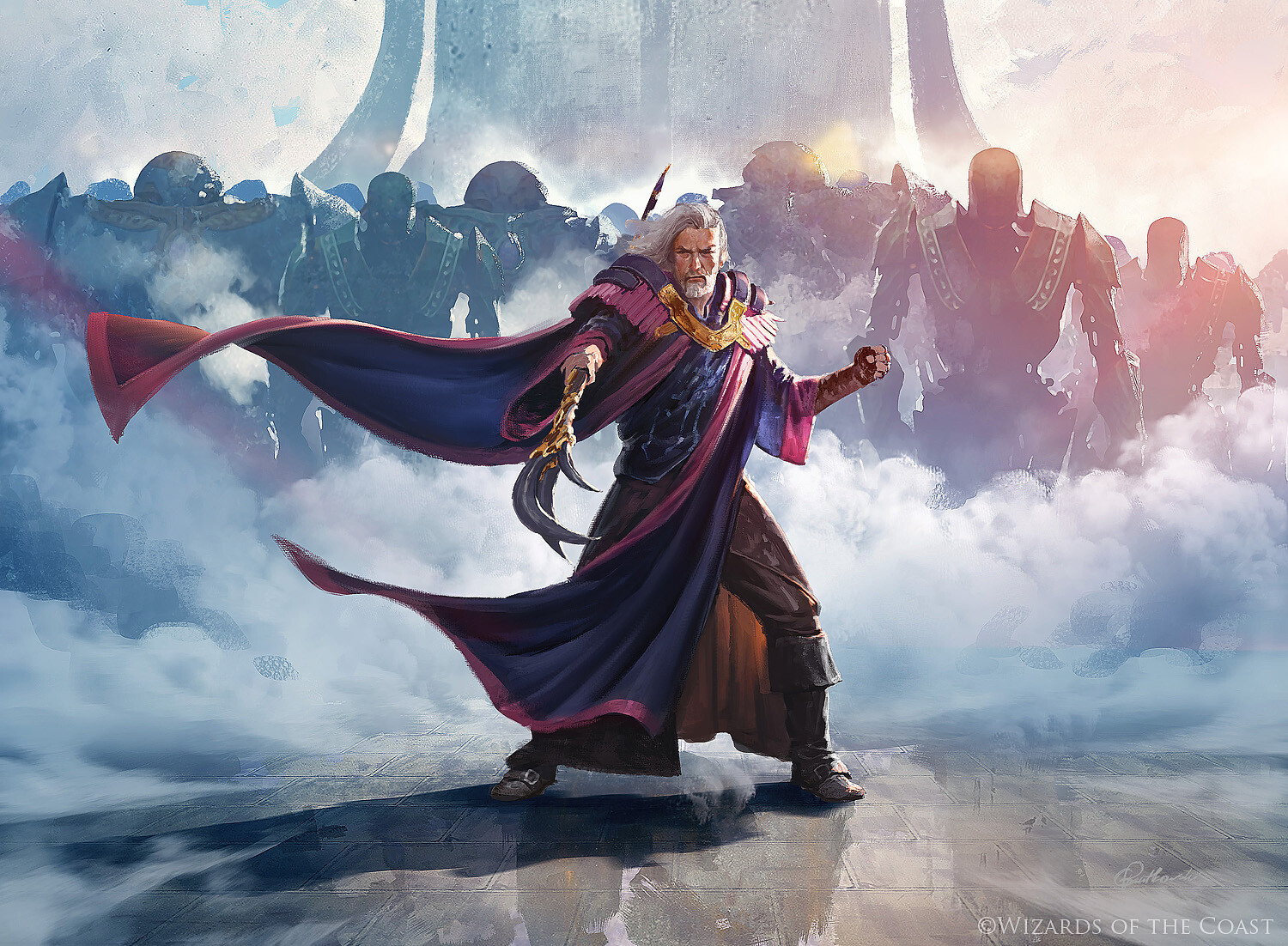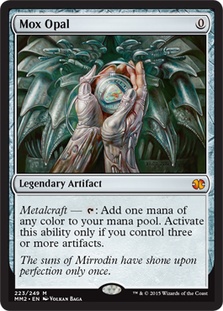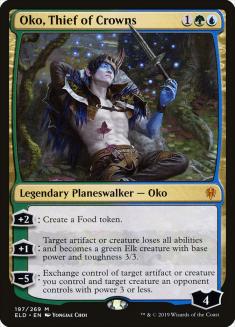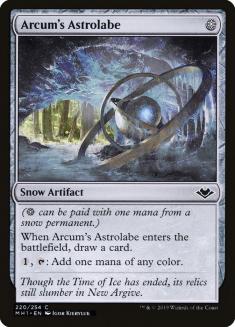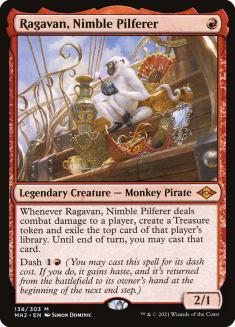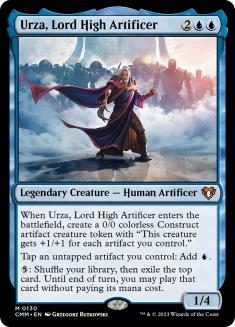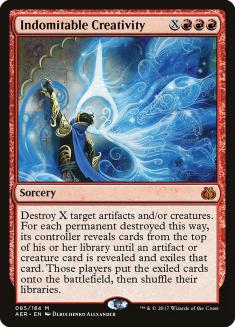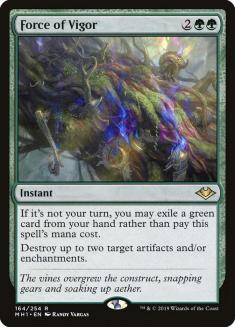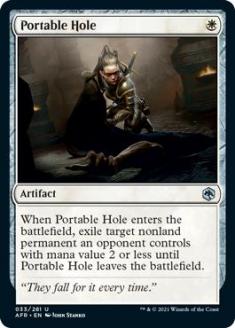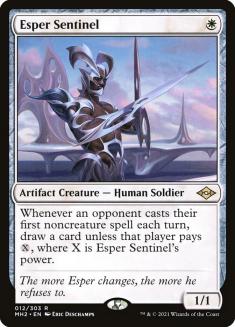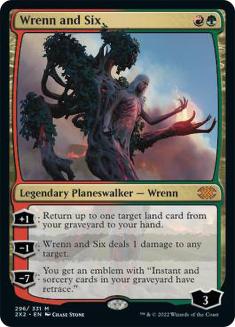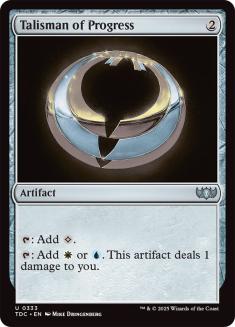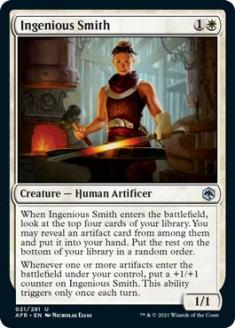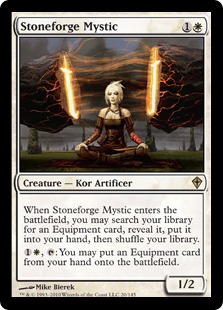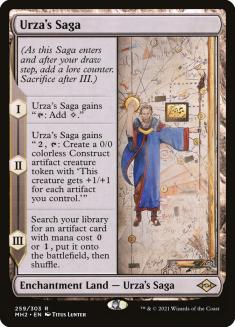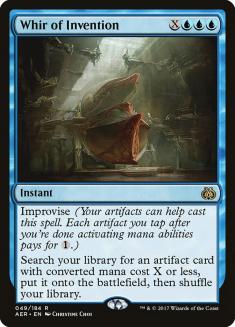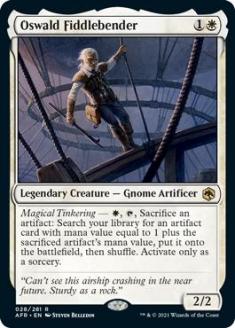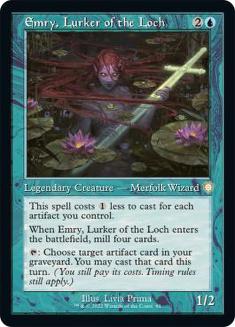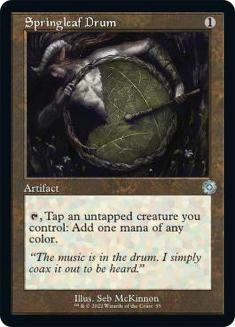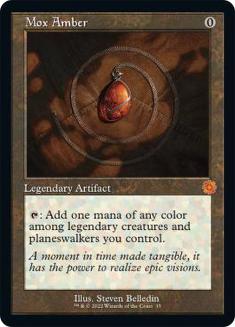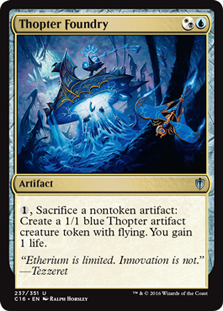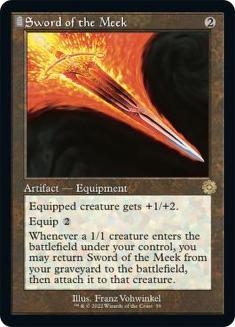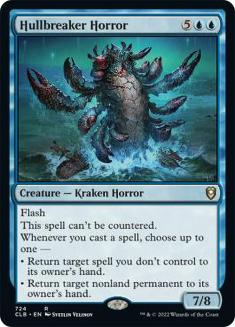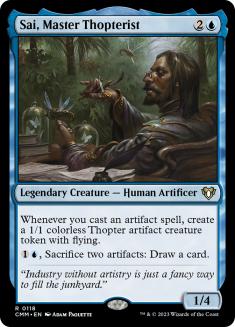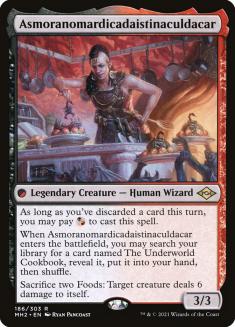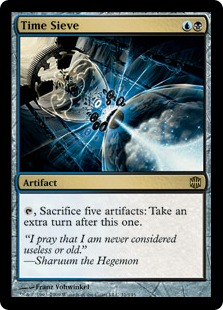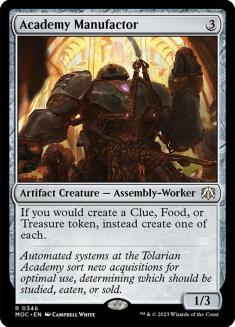Urza, Lord High Artificer has been a big of an enigma in the Modern Horizons 2 era, and over the last month players have finally started to unravel the puzzle of how to build a good Urza deck in the new Modern.
Urza has a hell of a pedigree, going from the only deck really competing with Hogaak, Arisen Necropolis to basically the only real deck in the era of Oko, Thief of Crowns and Arcum’s Astrolabe. Then a bunch of stuff happened, and with a relatively cold run for the deck since early 2020, it’s hard to tell how much of that was Urza and how much was that other stack of banned cards.
It’s telling I wrote this bit about banned cards with Urza before remembering the broken Throne of Eldraine-era Simic version also had Mystic Sanctuary. Definitely some good lessons generated in Renton from that era.
This has largely led to a lot of people having a distinct pattern of experiencing Urza in the Modern Horizons 2 era: they get excited about playing something that looks like the deck they remember being broken, then get let down when it isn’t the same value-combo-control-prison monstrosity it once was while everything else is massively more powerful.
But there’s also a decent amount of Urza winning these days, and there’s more to the archetype than that first impression.
To get to why you want to play Urza in the Modern metagame, you should compare it to the other four-drops people are playing that do similar things. It’s a value-mana-combo engine trying to dominate a game, which is basically the same thing Omnath, Locus of Creation is doing.
Your Urza, Lord High Artificer decks in today’s Modern should be aiming to play a similar metagame sector as Four-Color Control does. You want to be the bigger deck against other midrange and control, but also maintain good interaction against the smaller Ragavan, Nimble Pilferer midrange decks.
I would also compare the metagame role of the Urza decks to Ross Merriam’s pet deck Four-Color Indomitable Creativity. You aren’t just the big midrange deck; you’re aiming to be the biggest midrange deck. You lose a bit of ground against the most linear decks like Orzhov Hammer (Lurrus) compared to the Four-Color Control (Kaheera) decks that look like Azorius Control with two more colors, but in exchange you overwhelm the other decks playing in this space and have a bit more garbage insurance against things like Dredge or Gruul Belcher (Kaheera). The Urza decks even have better backstops against that nonsense than the Creativity deck, since they can tutor up a Soul-Guide Lantern or Pithing Needle in addition to stealing games with a fast combo.
The other important thing Urza offers is a way to play an artifact deck that doesn’t fold to Force of Vigor. Affinity put up a couple of results during the brief period where Force of Vigor and decks you wanted to Force of Vigor weren’t really a thing, but as soon as Colossus Hammer and Amulet of Vigor popped back up, that window slammed shut. It’s a bit weird to say your artifact deck doesn’t play artifacts worth killing, but if your payoffs are more Urza, Lord High Artificer than Urza’s Saga, it starts making sense.
The Urza Core
When you look at these decklists, your eye is drawn to a lot of flashier cards. But as far as I can tell, the most important cards for a functional Urza deck in Modern are the interactive artifacts: Portable Hole and Esper Sentinel.
With the Urza to Omnath comparison, the inherent issue for Urza is the Four-Color decks get to play an assortment of random good cards that interact and set up Omnath because the condition of that card working is you play fetchlands and have cards. With Urza, you need efficient artifacts, and there’s a much narrower subset of efficient artifacts that are also good interaction. You get to play one Soul-Guide Lantern and one Pithing Needle and one Aether Spellbomb or whatever conditional tutor targets you want, but you need way more than that to have a functional midrange plan. Thankfully, both Portable Hole and Esper Sentinel were released this year, so your entire deck works.
In case you were wondering how Esper Sentinel is interaction, it’s one of the few one-drop blockers that’s good against Ragavan on the draw. I outlined the issue where most answers to Ragavan just draw you into janky midrange battles, and where most one-drop blockers for Ragavan only have the downside of dying versus the upside of maintaining parity. Esper Sentinel is the reverse, where if it dies to removal it maintains parity, trading their mana for a Treasure, and pushes you ahead via taxing them if they don’t have Ragavan.
Notable Canadian ManaCymbal has been putting in some nonsense reps trying to make some weird combo versions of Urza work. I’ll circle back to the various combo end-games later, but it should be really telling that all his original versions slowly morphed into a bit of combo, but also four Portable Hole and four Esper Sentinel.
There are lists playing Thraben Inspector trying to replicate additional copies of these cards. That’s how important it is to have interactive one-drop artifacts in Modern.
This Ragavan talk bridges to another point: both of these cards are interactive against a very specific set of cheaper threats. That’s fine, because in theory anything more expensive gets run over by the Urza parts of your deck.
A couple of decisions appear to be fairly random when you look through the lists, but there’s a bit of method to parse from the madness.
The first is Stoneforge Mystic and Ingenious Smith. They both broadly do the same thing of forcing a removal spell while putting you up a relevant piece of cardboard, but Smith is just better when you more reliably have Mishra’s Bauble to immediately trigger it, while Stoneforge Mystic is better when you don’t have to draw Kaldra Compleat as a card as often. Lists often find room for both, especially when they’re 80 cards with Yorion, but if you’re going to only play one, default to Ingenious Smith for smaller decks and Stoneforge Mystic for larger ones.
These two-drop threats are important for another reason: making Urza’s Saga work. An Urza’s Saga trap I mentioned a few weeks ago is clunking up your deck to the point you can’t pay mana for Constructs, sacrifice an enchantment land, and actually cast your cards. You aren’t quite Orzhov Hammer (Lurrus) where activating Urza’s Saga means you aren’t casting the third spell in a turn, but the Urza decks with more two-drop threats at least try to take efficient game actions on top of making Construct tokens.
More and more lists have moved away from the tutor effects like Whir of Invention and Oswald Fiddlebender in the last month, and that seems like absolutely the right move. The drawback of toolbox strategies is drawing the bad cards, or just drawing the more expensive tutor effect when you’re simply trying to do something relevant. With a metagame that shifted rapidly towards Grixis Death’s Shadow (Lurrus) and similar decks, you just don’t have the time to mess around with these cards. There isn’t a card you can tutor for that’s game-breaking enough to spend the extra mana on, and Oswald is just a two-drop that will trade for their one-cost removal spell enough of the time that it existing is a liability.
If you aren’t under extreme pressure to play a card-for-card interactive game, or you just aren’t under pressure to be playing that game from the first turns of the game, I would look to re-add these cards to your decks. That could be if some linear deck successfully outmaneuvers the Ragavan decks, or when true control takes over the format again.
Emry, Lurker of the Loch has disappeared from lists even more than the tutors. The problem is the card does relatively few things well. It flips Mishra’s Bauble and lets you recycle your one-of Spellbombs; past that, you’re talking about having Thopter Foundry active to get real value out of it. Save it for your weirder combo brews or at most in low quantities. Don’t center your interactive combo deck around a card that’s bad in multiples and doesn’t do much when you draw it.
With your deck revolving around a four-drop creature, there’s definitely a desire to have some mana ramp in your deck. It matters a bit less that it’s an artifact since most of the things you would do with that just translate to a mana, like improvise or tapping to Urza, but you aren’t splashing for Utopia Sprawl, so artifacts tend to be the best options. And “best” is a loose word, since there’s a lot.
Springleaf Drum is probably the most powerful mana artifact in Modern, but just Esper Sentinel isn’t enough to make it work. The best play patterns for that card involve a lot of one-drops and zero-drop creatures to cast a bunch of stuff Turn 1, and these decks aren’t built for that. The first copy has some Urza’s Saga tutor value, but beyond that it gets sketchy swiftly.
Mox Amber is a good choice if your deck is supporting Mox Amber. That means cheaper legends you cast leading up to Urza, not Urza since it turns all your artifacts into Mox Ambers. That largely involves playing cards I already discussed not liking in the interactive shells, and I wouldn’t build a Mox Amber list unless it was doing something unique.
Talisman of Progress is just fine. The rate is nothing special. The effect is nothing special. In my mind it’s coupled with Yorion, Sky Nomad and wanting five or eight mana for that effect. Play Talisman in small numbers at most, and really only if you have more than just Urza making you want the ramp. The other card that comes to mind that pays off Talisman is Thought Monitor, both directly doubling the “mana output” of the Talisman and because Talisman then represents additional blue sources to balance out and Darksteel Citadels you might play.
Big Deck, Small Deck
Urza lists with both 60 and 80 cards have been winning at similar rates. Why would you choose one option over the other?
The big difference is how much you care about broadly interacting with your opponents. I compared the Urza decks to the Four-Color Indomitable Creativity decks, so maybe we should extend that analogy and call the 80-card lists the Creativity decks to the 60-card lists Reanimator decks. Both are playing interactive to some degree, but the Yorion lists are fine playing a true control game while the small decks are combo with a splash of interaction.
To highlight the differences, let’s look at some decklists from the last couple of weeks.
Creatures (15)
Planeswalkers (2)
Lands (23)
Spells (21)

Creatures (16)
Planeswalkers (3)
Lands (22)
Spells (19)

Trends here in the 60-card lists are players being lean with their interactive slots. If you add Solitude, you have to trim Metallic Rebuke. There’s also a push towards synergies based on cards that are liabilities when you don’t draw them together, namely Darksteel Citadel with Thought Monitor in SpiderSpace’s list.
Creatures (16)
Planeswalkers (4)
Lands (30)
Spells (30)

Creatures (26)
- 4 Tidehollow Sculler
- 4 Stoneforge Mystic
- 2 Etched Champion
- 4 Thraben Inspector
- 4 Urza, Lord High Artificer
- 4 Esper Sentinel
- 4 Ingenious Smith
Planeswalkers (1)
Lands (29)
Spells (24)

On the big deck side of things, we see a bunch more interaction and the reverse of the Thought Monitor-Darksteel Citadel thing. ContraEgo, a player whose Magic Online results page just says Urza for two solid years, is playing a bunch of Thopter Foundries because they’re also playing Tidehollow Sculler and can sacrifice that with its trigger on the stack for a permanent exile.
I’m also glad to see these decks having some respect for playable hands and moving towards the 30-land mark. Keep up the good work.
The better it is to interact with your opponents, the better the Yorion builds will be, but the differences are small and there’s a lot of randomness involved. As long as you make good decisions for whichever deck size you choose, it’s close enough.
The Combo Options
While the lists winning right now are all Thopter/Sword-based, there are other reasonable artifact combos to explore with Urza in Modern.
Once you have established blue mana for Urza and white for the one-drops, the obvious combo kill to pair with Urza is Thopter Foundry plus Sword of the Meek. The combo works by itself and goes infinite with Urza. The problem is neither component piece is very good, and the non-infinite combo is a bit limited in scope. That tends to be fine when you’re fighting against the fair decks Urza wants to fight against, but it means if decks like Dimir Mill (Lurrus) or Mono-Green Tron pop back up, your ability to steal wins is almost nonexistent.
You may have noticed Hullbreaker Horror hanging out in the ManaCymbal list from earlier. In formats with zero-cost cards, you naturally stumble into combo kills with it. It does sound kinda silly to say your seven-drop bomb creature is the infinite combo you’re aiming for, but once you resolve Urza, you have a lot of margin to play Commander in your Modern match. The specific kill is either just looping Mishra’s Baubles with Sai, Master Thopterist hanging around, or a more convoluted kill where Mox Amber and Mishra’s Bauble loop for infinite mana, which leads to infinite recasts of a Thought Monitor and some arbitrary win from there.
With recent results pointing towards fairer decks, I’m inclined to stick to Thopter Foundry in the short term, but Sai just as a card has looked pretty impressive in these decks. There are definitely some things happening here that make it look better, like leaning into Emry, Lurker of the Loch and having assured artifact casts, but I think the more “stock” Urza decks should look into that card as just another good thing to do.
The other popular combo showing up is Time Sieve plus Academy Manufactor. This is more of an Asmor + The Underworld Cookbook setup than an Urza one, but the decks cross-pollinate enough it’s worth mentioning. In terms of raw combo kills this is among the combo-iest, but it also just means you built a deck that’s weak to Force of Vigor again. That isn’t a non-starter at all points of the Modern metagame, but it’s not my thing right now.
If we do loop back around to a low Force of Vigor metagame, you still have to resolve the question of why this is better than playing Amulet Titan, Orzhov Hammer (Lurrus), or just Hardened Scales at that point. That sounds like a problem I don’t want to solve now, so you can figure out in the future if you’re playing Academy Manufactor because it’s good or just because it makes good screenshots.
There are many questions to answer when building an Urza-based deck in Modern, and that’s probably why it has taken so long to get to builds that win because they make sense. But that doesn’t mean anything is remotely settled on what the absolute best list is or even how well the deck can do.
If you want to give Urza a spin, now is the perfect time. Better lists to start with are intersecting with a metagame that Portable Hole is good against, that’s light on decks aiming to directly punish bulkier midrange. Or I can bust out the strongest argument for the deck:
Playing the game after you resolve Urza, Lord High Artificer is just good, clean fun.

